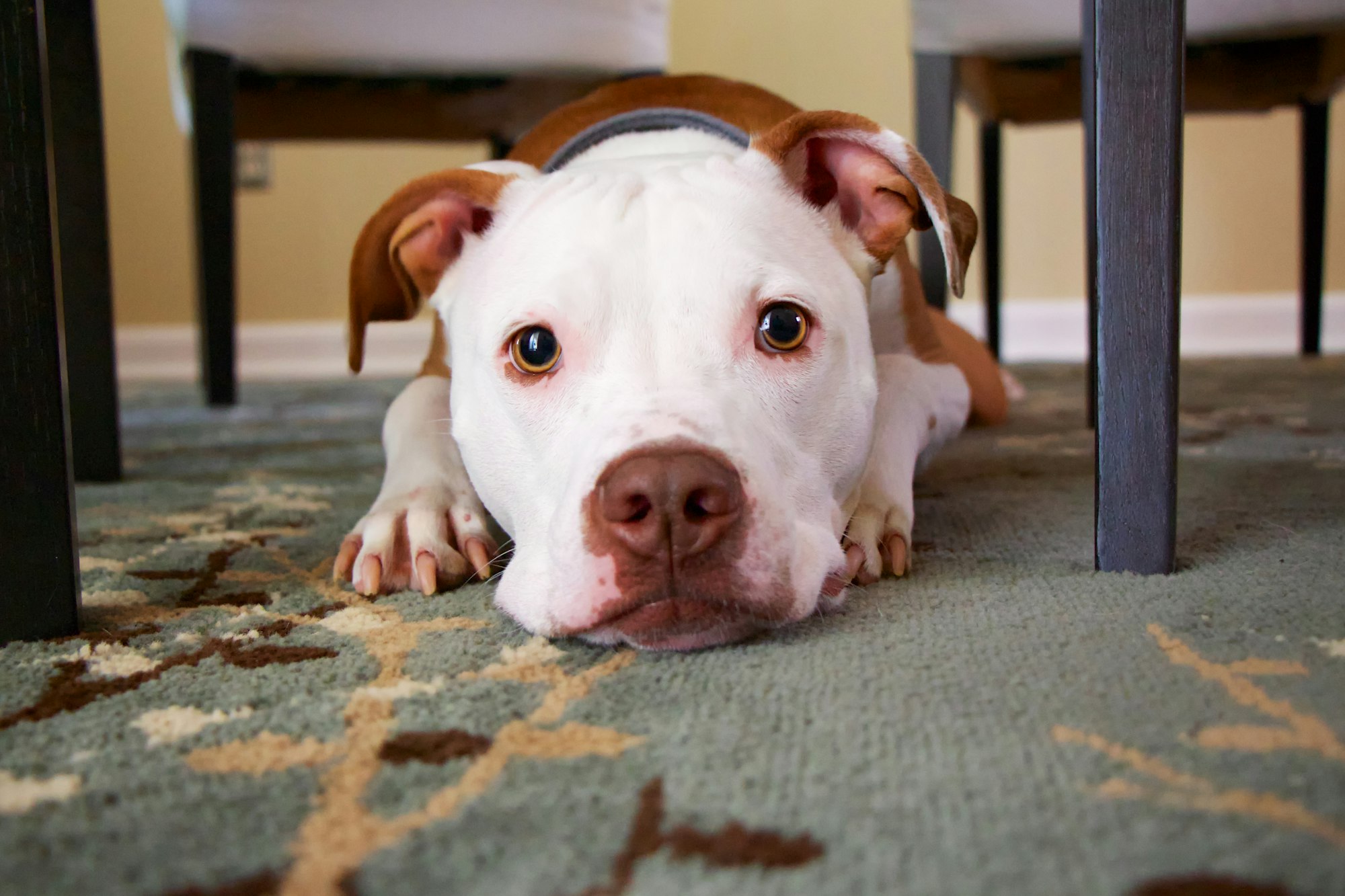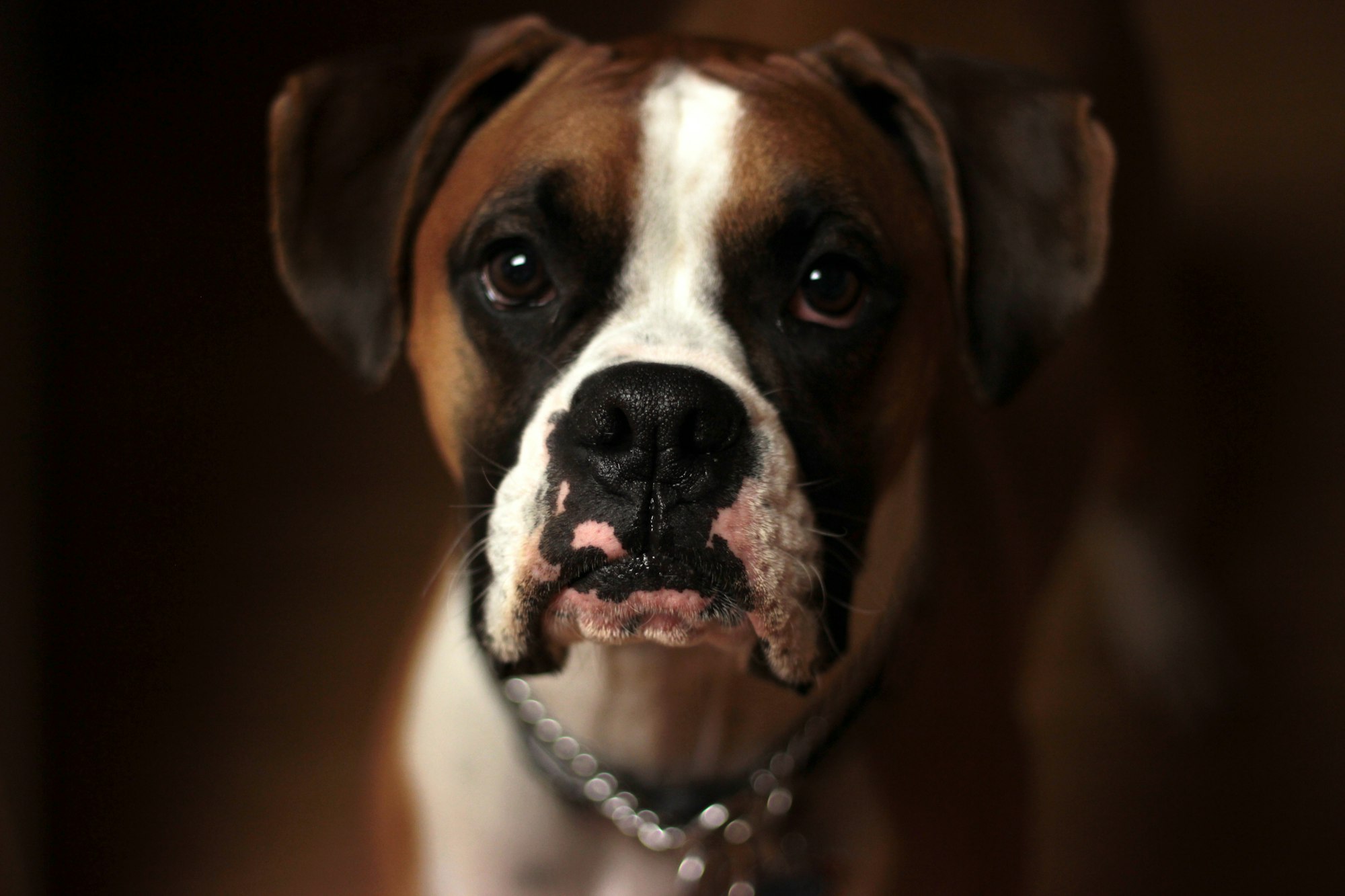As a dog parent, you've likely encountered a familiar sight. Your furry friend's ears perk up, their tail starts wagging, and suddenly, they're whimpering and pawing at their crate. This is dog communication in action, often signaling that your dog is anxious.
Why Does Crate Anxiety Occur?
Anxiety can strike dogs for a myriad of reasons. Separation anxiety is a common cause, but other factors such as a sudden change in environment or past trauma can also contribute to it. In some cases, a health issue like allergies could make your dog uncomfortable and anxious in the crate.
Recognizing the Signs of Anxiety
Recognizing the signs of anxiety in your dog is the first step towards soothing them. Look for signs such as excessive drooling, whining, or scratching at the crate. These are clear indicators that your dog is uncomfortable.
Creating a Safe Haven: The Crate
Contrary to some beliefs, a crate shouldn't be a space where your dog feels trapped. Instead, it should serve as a safe haven for them. By making the crate a positive and comfortable place, you'll be well on your way to soothing your anxious dog.

Comfortable Bedding
Just like us humans, dogs also need a cozy place to rest. Invest in some soft, plush bedding that will make your dog's crate feel like a luxury retreat. It will help ease their anxiety and provide them with the restful sleep they deserve.
Familiar Scent
Try including an item that has your scent on it in the crate. This could be an old shirt or a blanket. Your smell will bring comfort to your anxious pup, helping them feel safe and secure.
Dog Toys
Include a few of your dog's favorite toys in the crate. Chew toys, in particular, can be great stress relievers for anxious dogs.
The Power of Training
Training is an essential part of soothing an anxious dog in a crate. This involves getting your dog accustomed to the crate slowly and gradually, rewarding them for staying calm inside the crate, and providing plenty of positive reinforcement.
Gradual Acclimatization
Start by placing your dog's food inside the crate. This will allow them to associate the crate with positive experiences. Gradually increase the amount of time your dog spends in the crate, starting with a few minutes at a time.
Rewarding Calm Behavior
Whenever your dog stays calm inside the crate, reward them with treats or praise. This will reinforce their positive behavior and help reduce their anxiety.
Dealing with Severe Anxiety
For dogs with severe crate anxiety, it might be beneficial to seek the help of a professional. A trained dog behaviorist can provide valuable insight into your dog's behavior and offer personalized strategies to help soothe their anxiety.
Consider Microchipping
If your dog's anxiety is severe enough to cause them to escape from their crate, it might be a good idea to consider a microchip. This small device, implanted under your dog's skin, can help you locate your dog in case they manage to get out.
Keep them Busy
Keeping your dog busy during the day can help ease their anxiety. Taking your dog hiking, for example, is a great way to burn off their excess energy and keep them calm when they return home.
Dog Anxiety and Seasonal Shedding
Interestingly, seasonal shedding can sometimes contribute to a dog's anxiety. If your dog is shedding excessively and seems more anxious than usual, consider consulting with a veterinarian to ensure there's no underlying issue.
A Happy Dog In the Crate
It may take time and patience, but soothing an anxious dog in a crate is certainly achievable. With a combination of training, comfort, and understanding, you can transform the crate from a space of anxiety to a sanctuary for your dog.
Remember, every dog is unique, and what works for one may not work for another. It's about understanding your individual dog's needs and fears, and addressing them in a way that makes them feel secure and loved. The ultimate reward will be seeing your happy dog, content and calm in their crate.
In conclusion, the secret to soothing an anxious dog in a crate lies in understanding, patience, and a whole lot of love. Your dog looks to you for comfort and safety. By providing that within the confines of their crate, you can help alleviate their anxiety and transform the crate into a place of tranquility and rest.
By following these guidelines, you'll not only be on your way to having a less anxious pet but also ensuring a deeper, more profound bond between you and your furry friend. Remember, an anxiety-free dog is a happy dog, and a happy dog leads to a happy home.
And there's nothing quite like the sight of a relaxed, content dog snoozing peacefully in their crate, is there?

Holistic Approaches to Calming an Anxious Dog
The journey to soothing an anxious dog doesn't have to be limited to crate training. Incorporating holistic approaches to manage your dog's overall anxiety can be beneficial as well.
A Balanced Diet
Just like us, what our dogs eat plays a crucial role in their mental health. A balanced diet can help regulate your dog's mood and reduce anxiety. Foods rich in tryptophan, for instance, can induce feelings of calm in dogs.
Regular Exercise
Exercise is an excellent way of reducing anxiety in dogs. Not only does it burn off their pent-up energy, but it also releases endorphins that can induce feelings of happiness and reduce stress. This means your evening walks or daily games of fetch are doing more good than you may realize!
Massage
Dogs, like humans, can benefit from the relaxing effects of massage. This can be especially soothing for dogs who have crate anxiety. Simply spending a few minutes each day gently massaging your dog can help reduce their anxiety.
The Role of Vet Care
Never underestimate the power of professional help. If your dog's anxiety seems overwhelming or is causing significant distress, it's time to consult with a veterinarian. They may be able to recommend suitable treatment options, such as medication or behavioral therapy.
Picking the Right Crate
Lastly, choosing the right crate for your dog is crucial. The crate should be large enough for your dog to comfortably stand, turn around, and lie down. It should also be sturdy and secure, ensuring your dog can't escape when they're feeling anxious.
Patience is Key
Remember, soothing an anxious dog in a crate won't happen overnight. It's a gradual process that requires patience and understanding. There will be days of progress and days of setbacks, but what's important is to stay consistent.
With time and effort, you'll start to see changes. That once anxious dog will begin to see their crate as a safe space, a haven where they can relax and feel secure.
In the end, the journey to soothing an anxious dog in a crate is as rewarding as the outcome. It strengthens the bond between you and your pet, fostering trust and mutual respect. And there's no greater joy than seeing your once anxious furry friend snoozing peacefully in their crate, feeling safe and content in their little sanctuary.
Incorporating Fi Dog Collars
While we've covered numerous strategies to help soothe an anxious dog in a crate, there's another tool worth discussing that's been a game-changer for many dog parents — Fi Dog Collars.

Tracking with Fi
As we mentioned earlier, anxiety can sometimes lead to escape attempts. This is where Fi Dog Collars come in handy. These collars are equipped with a GPS tracker, which makes it easy for you to locate your dog if they ever escape from their crate or home. Having this extra layer of security can also provide you, the owner, some much-needed peace of mind.
Exercise with Fi
We've emphasized the importance of regular exercise in managing your dog's anxiety. Fi Dog Collars also double as a fitness tracker, allowing you to monitor your dog's daily activity levels. This is especially useful for ensuring your dog is getting enough exercise to help mitigate their anxiety. Whether it's a walk in the park or a vigorous hiking trip, you can keep track of it all.
Training with Fi
Training is integral to helping your dog feel more comfortable in their crate. The Fi Dog Collar can be a useful tool in this regard. By understanding your dog's movement patterns through the tracking feature, you can gain insights into their behavior, which can aid in refining your training strategies.
For example, if you notice your dog pacing excessively around crate time, it could be a sign of their anxiety peaking. Using this information, you could adjust your training schedule or incorporate more calming activities around this time.
Security with Fi
A crucial aspect of making your dog feel safe in their crate is ensuring the crate itself is secure. However, if your dog does manage to make a Houdini-like escape, a Fi Dog Collar can provide a much-needed safety net.
Frequently Asked Questions
1. What are the signs of anxiety in dogs?
Common signs of anxiety in dogs include excessive barking, pacing, shaking, drooling, and trying to escape the crate. Some dogs might also exhibit destructive behavior such as chewing on the crate bars or their bedding.
2. How can I make my dog's crate more comfortable?
To make your dog's crate more comfortable, provide soft bedding, familiar items like a favorite toy or blanket with your scent, and ensure the crate is in a quiet, low-traffic area of your home.
3. How can the Fi Dog Collar help with crate anxiety?
The Fi Dog Collar can be used as a tool to track your dog's movements, indicating when their anxiety levels might be peaking. Additionally, it can help ensure your dog's safety by tracking their location if they escape from their crate due to severe anxiety.
4. How long does it take to soothe an anxious dog in a crate?
Soothing an anxious dog in a crate is a process that takes time and patience. The duration depends on the individual dog and the severity of their anxiety. It could take anywhere from a few weeks to several months of consistent training and positive reinforcement.
5. Should I consult a professional for my dog's crate anxiety?
If your dog's crate anxiety is severe and causing distress, or if you've tried various strategies without success, it's a good idea to consult with a professional. A certified animal behaviorist or a veterinarian can provide valuable advice tailored to your dog's needs.
Conclusion:
In conclusion, soothing an anxious dog in a crate is a multifaceted approach that requires understanding, patience, and consistent effort. Recognizing the signs of anxiety is the first step, followed by making the crate a comfortable, secure haven with familiar scents, comfortable bedding, and favorite toys.
Gradual acclimatization to the crate combined with rewarding calm behavior forms the basis of effective crate training. Holistic approaches such as a balanced diet, regular exercise, and massage can also aid in managing your dog's overall anxiety.
For severe anxiety, professional help from a behaviorist or veterinarian might be necessary. Utilizing tools like the Fi Dog Collar can provide valuable insights into your dog's behavior, help ensure their safety, and aid in monitoring their exercise levels.
Remember, every dog is unique and what works for one may not work for another. The goal is to transform the crate from a source of anxiety into a place of tranquility and rest. With patience and effort, your anxious dog can learn to see their crate as a safe, comforting space, bringing peace of mind to both you and your beloved pet.